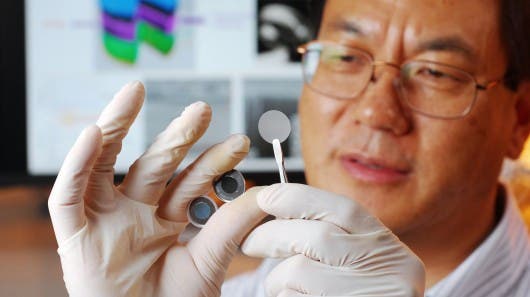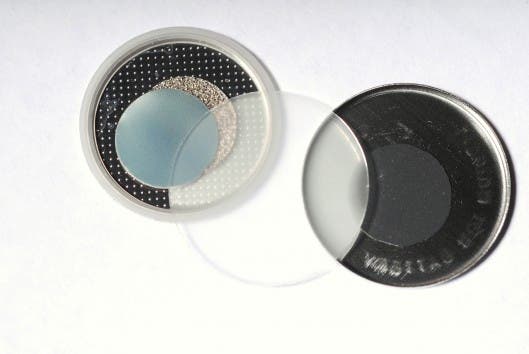
Generating useful energy out of otherwise mundane activities has been a goal for scientists for many years. Bicycle dynamos that generate electrical current to power a headlight from the kinetic energy generated by the cyclist have been used since the turn of the last century. Modern approaches have gone to greater lengths, turning ones footsteps on special floor tiles into electricity or even charging laptops by converting the pressure applied by the user when typing.
If energy storage is a concern, however, all of these solutions need to adapt a system in which energy generation and storage are separate, the most common example being the traditional two-cell generator-storage system. Scientists at Georgia Institute of Technology, however, have developed a novel approach which allowed them to convert mechanical energy into chemical energy directly without an intermediate step. The hybrid generator-storage cell, thus makes the need for a separate battery or storage unit redundant, greatly reducing weight. The cell stores the power until it is released as an electrical current.

The hybrid power-generator cell is comprised of a lithium-cobalt oxide (LiCoO2) cathode and a titanium dioxide anode (TiO2 nanotubes) separated by a PVDF film. Harnessing the piezoelectric effect, when pressure is applied to the cells, electric voltage is generated that moves lithium ions in the electrolyte from the cathode to the anode, charging the cell in the process.
Not only this, the approach is a lot more efficient too – the generator-storage cell will be as much as five times more efficient at converting mechanical energy to chemical energy as a traditional two-cell generator-storage system, according to Zhong Lin Wang, a Regents professor in the School of Materials Science and Engineering at the Georgia Institute of Technology.
“People are accustomed to considering electrical generation and storage as two separate operations done in two separate units,” he says. “We have put them together in a single hybrid unit to create a self-charging power cell, demonstrating a new technique for charge conversion and storage in one integrated unit.”
A slew of applications could open up for this hybrid cell. For one, considering its light weight, many kinetic activities could be harnessed, from smart tires that turn the pressure into electrical current, to very subtle devices that are powered by vibrations. Special boots or clothing systems could generate electricity to power mobile devices. Something like this could definitely prove useful to the military, and indeed it seems they’ve more than shown interest since funding for the research came from the Defense Advanced Research Projects Agency (DARPA), the US Air Force as well as the US Department of Energy, the National Science Foundation, and the Knowledge Innovation Program of the Chinese Academy of Sciences.
Findings were published in the journal Nano Letters.
source: Georgia Tech via Gizmag
Was this helpful?



